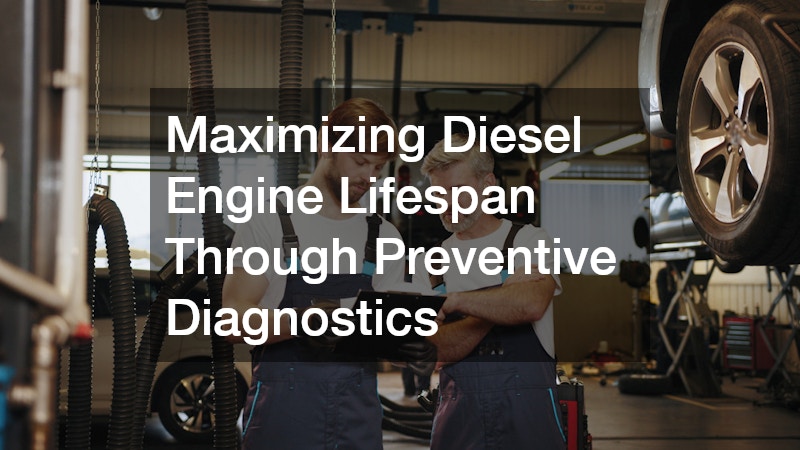-
Regular vehicle maintenance extends engine life by preventing premature wear.
-
Transmission and suspension upkeep directly affect power delivery and efficiency.
-
Proper car storage and motorcycle maintenance prevent corrosion and mechanical failure.
-
Diesel diagnostics improve performance, while hail damage checks protect vital components.
-
Relying on professional vehicle repair services ensures consistent care.
-
Towing and off-road recovery should be handled with precision to prevent strain.
-
Consulting local auto accident attorneys helps protect your rights after damage-related incidents.
Introduction: Keeping Your Engine at Its Best
Your vehicle’s engine is the heart of your car — keeping it in peak condition ensures reliability, fuel efficiency, and long-term performance. However, effective engine care extends far beyond oil changes. It includes regular checks on transmissions, suspensions, diagnostics, and external protection measures that affect how the engine performs and ages.
Neglecting even small repairs can have a compounding effect. According to AAA, over 35% of major engine failures stem from delayed maintenance or ignored warning signs. Proper engine care also improves resale value and fuel economy while minimizing the risk of unexpected breakdowns.
In this guide, we’ll explore practical, data-backed strategies to maintain your vehicle’s performance. From managing drivetrain systems to post-hail repairs and off-road recovery, each section offers expert advice, actionable tips, and proven maintenance steps to keep your engine healthy and efficient.
-
Understanding the Importance of a Healthy Drivetrain
A vehicle’s drivetrain is what transfers power from the engine to the wheels. Smooth transmission performance and proper lubrication are crucial for efficient power transfer. Without regular transmission repairs, friction builds up, fluid leaks develop, and gear shifts become rough — all of which increase stress on the engine and fuel system.
By staying proactive about drivetrain maintenance, you prevent costly replacements and extend the life of your vehicle’s components. According to RepairPal, vehicles receiving regular transmission service save around $1,200 annually in long-term repairs compared to those that don’t.
Actionable Tips for Drivetrain Health
-
Check transmission fluid every 6,000–8,000 miles for clarity and level.
-
Address slipping gears, whining noises, or slow shifting immediately.
-
Schedule diagnostic scans annually to detect potential issues early.
-
Use only manufacturer-approved fluids for optimal performance.
Healthy drivetrains improve power delivery and prevent overheating, ensuring the engine runs efficiently even under load. The key lies in consistent monitoring, early detection, and professional servicing before problems escalate.
Keeping Your Ride Balanced for Better Engine Efficiency

A well-maintained suspension system directly contributes to better fuel economy and a smoother drive. Poor alignment or worn-out shocks increase drag and cause the engine to compensate for resistance, reducing efficiency. Proper suspension repairs ensure balance, stability, and optimized handling performance.
When the suspension system is aligned, the car experiences less rolling resistance. This not only improves ride comfort but also prevents uneven tire wear and excess strain on drivetrain components. According to Consumer Reports, well-tuned suspensions can boost overall fuel efficiency by 10–15%.
Actionable Suspension Care Tips
-
Inspect shocks and struts every 15,000 miles for leaks or wear.
-
Replace suspension bushings to avoid unwanted vibrations.
-
Ensure tire pressure matches manufacturer recommendations.
-
Schedule annual wheel alignment to maintain proper geometry.
A balanced suspension protects the engine by minimizing unnecessary energy loss. Investing in periodic inspections ensures every component, from springs to control arms, functions in harmony for maximum efficiency.
Preserving Engine Integrity During Long-Term Vehicle Storage
When storing a vehicle for several months or longer, proper preparation is essential to prevent corrosion, rust, and internal fluid degradation. Without the right precautions, long-term storage can lead to issues like gasket hardening, oil contamination, or coolant separation—all of which compromise your engine’s performance and longevity. Maintaining your engine’s health during car storage involves careful attention to the fuel system, battery, and engine seals.
According to MotorTrend, around 60% of vehicles stored for more than a year experience start-up problems caused by poor storage practices or neglected maintenance. Fuel left untreated can oxidize and damage injectors, while inactive engines can develop condensation, leading to internal rust or bearing wear.
Smart Car Storage Tips
-
Fill the gas tank and add a stabilizer to prevent condensation.
-
Disconnect the battery or use a trickle charger to maintain voltage.
-
Place the car on jack stands to prevent tire flat spots.
-
Cover with a breathable, UV-resistant fabric cover.
Periodic checks during storage — like rotating the engine or inspecting for leaks — keep mechanical parts lubricated. Proper preparation ensures your car restarts smoothly without compromising the engine’s health.
Maintaining Motorcycle Engines for Optimal Performance
Motorcycle engines, especially high-performance models like Harley-Davidsons, demand specialized attention. Regular Harley maintenance includes lubrication, valve clearance checks, and belt adjustments. Neglecting these can lead to carbon buildup, reduced power, or overheating.
Frequent oil changes, proper cooling system management, and air filter cleaning ensure consistent power output and smoother rides. According to RideApart, motorcycles maintained regularly have up to 40% longer engine life than neglected ones.
Actionable Motorcycle Care Tips
Change engine oil every 3,000 miles or three months.
Inspect spark plugs and replace if fouled or worn.
Check the primary chain alignment and belt tension.
Keep air filters clean to ensure optimal fuel-air mix.
Consistent motorcycle maintenance not only enhances performance but also rider safety. Proper upkeep reduces vibration, improves throttle response, and ensures a more reliable ride.
Maximizing Diesel Engine Lifespan Through Preventive Diagnostics

Diesel engines are prized for their torque, efficiency, and longevity, but maintaining their performance requires consistent preventive diagnostics. Ignoring early warning signs such as hard starts, rough idling, or sluggish acceleration can lead to clogged fuel injectors, worn-out turbochargers, and poor fuel combustion. Understanding the fundamentals of diesel engine mechanics allows vehicle owners to detect minor issues early and prevent expensive breakdowns.
Routine diagnostics are essential to keeping the system in peak condition. Regular compression testing, injector servicing, and fuel system inspections help maintain optimal engine pressure and prevent soot buildup. Experts in diesel engine mechanics emphasize the importance of timely maintenance to preserve performance and fuel efficiency. According to the Diesel Technology Forum, proper diagnostic care can improve fuel economy by 8–12% and extend an engine’s operational lifespan significantly.
By following these preventive practices, drivers can ensure reliable performance and long-term durability
Preventive Diesel Engine Care Steps
-
Perform compression and fuel pressure tests every 20,000 miles.
-
Replace fuel filters regularly to prevent injector clogging.
-
Use diesel additives to clean injectors and reduce soot buildup.
-
Check turbocharger boost levels and air filters frequently.
Preventive diagnostics extend diesel longevity, improving reliability for heavy-use vehicles and daily commuters alike.
How to Protect Your Engine After Hail Damage
Hail doesn’t just damage the car’s exterior — it can compromise seals, vents, and engine components. Addressing car hail damage promptly prevents leaks and rust that could harm internal parts.
A visual inspection immediately after a storm helps detect cracks, dents, or broken seals that might allow moisture infiltration. According to the Insurance Institute for Highway Safety (IIHS), hail-related repairs account for over $3 billion annually.
Post-Hail Protection Tips
-
Examine under-hood seals for damage or displacement.
-
Use paintless dent repair to maintain surface coatings.
-
Protect your vehicle with a hail-resistant cover when parked outdoors.
-
Check for water intrusion in air filters or electrical systems.
Early intervention ensures that moisture doesn’t corrode internal engine components or wiring harnesses, maintaining your car’s reliability.
Scheduling Routine Checks with Trusted Automotive Professionals
Professional vehicle repair services play a vital role in ensuring long-term vehicle reliability and safety. Skilled technicians have the experience and diagnostic tools needed to identify hidden problems—such as minor leaks, worn belts, or misaligned components—before they escalate into costly repairs. Systems like the transmission, cooling unit, and exhaust require precise calibration, and regular oversight from qualified experts ensures they continue operating at peak efficiency.
According to research by J.D. Power, maintaining a consistent service schedule can reduce engine-related breakdowns by nearly 30%. Certified automotive professionals use advanced computerized diagnostics to analyze system performance, detect inefficiencies, and recommend corrective measures that preserve your car’s performance and value over time.
Routine Service Best Practices
-
Keep a maintenance log for oil changes, filters, and brake inspections.
-
Request digital diagnostics during each visit.
-
Prioritize certified technicians familiar with your vehicle type.
-
Schedule full inspections twice a year.
Regular service keeps your car dependable, safe, and running at peak performance, ultimately extending its lifespan.
Ensuring Safe Engine Handling During Towing Situations

Improper towing can put severe strain on your drivetrain, transmission, and cooling systems, often leading to expensive mechanical failures. Many drivers overlook how critical proper towing techniques are for maintaining engine health and preventing overheating under heavy loads. Adhering to recommended towing procedures minimizes stress on internal components and safeguards against fluid breakdown or transmission slippage.
According to the AAA Towing Safety Report, nearly one in four breakdowns during towing are caused by overheating or strain-related failures. Using the right towing setup and monitoring engine temperature can drastically reduce this risk. Equipping your vehicle with manufacturer-rated hitches, ensuring adequate coolant levels, and maintaining tire balance all contribute to safer towing experiences.
Towing Safety Guidelines
-
Use the manufacturer’s recommended towing capacity.
-
Keep transmission in neutral when applicable.
-
Idle the engine briefly before towing to stabilize oil flow.
-
Never exceed 55 mph while towing to prevent stress.
Proper technique prevents transmission wear and engine overheating, ensuring both the tow vehicle and the load remain safe.
Recovering Vehicles Safely After Off-Road Challenges
Off-roading exposes vehicles to extreme environments — from rocky inclines to deep mud and unpredictable water crossings. Proper off-road recovery practices are essential not just for getting unstuck, but also for maintaining vehicle integrity and long-term performance. Neglecting recovery steps after tough terrain drives can cause corrosion, suspension fatigue, or drivetrain stress that shortens engine life.
After every off-road excursion, always start by cleaning the undercarriage to remove mud, gravel, and salt buildup that can trap moisture or restrict airflow to critical systems like the radiator and transmission cooler. Next, inspect suspension arms, brake lines, wheel hubs, and air intake systems for cracks or damage caused by debris or impact.
According to Overland Journal, vehicles that undergo proper post-trip cleaning and off-road recovery maintenance experience 35% fewer mechanical failures.
Off-Road Recovery Tips
-
Inspect air filters and replace if clogged.
-
Check fluid levels and differentials for water contamination.
-
Wash undercarriage with high-pressure water to remove dirt.
-
Re-lubricate suspension joints and bearings.
Thorough recovery maintenance ensures your vehicle remains ready for the next adventure while keeping engine efficiency intact.
Understanding Legal Support After Engine-Related Collisions
Engine-related collisions can lead to more than visible body damage — they often result in hidden powertrain, transmission, or electrical issues that surface weeks later. In such situations, consulting local auto accident attorneys is crucial to ensure you receive full compensation for repairs, medical bills, and any losses resulting from downtime or reduced vehicle value.
Accident claims involving engine or drivetrain damage can be complex, especially when insurance providers dispute mechanical assessments. Engaging legal professionals early helps streamline documentation, preserve evidence, and coordinate expert inspections. Attorneys can also negotiate directly with insurers to prevent undervalued settlements, ensuring your claim reflects the true cost of restoration and related expenses.
According to the National Highway Traffic Safety Administration (NHTSA), more than 6 million vehicle collisions each year involve mechanical or engine-related damage. Many of these incidents require technical evaluation to establish liability and repair costs accurately.
Post-Accident Action Steps
-
Get a certified mechanic’s inspection of all mechanical damage.
-
Document every repair estimate and receipt.
-
Contact experienced auto accident attorneys for guidance.
-
Keep communication records with insurers for transparency.
Legal assistance ensures fair claim evaluation and helps you recover losses efficiently after an accident.
Conclusion: Building a Consistent Engine Care Routine
Comprehensive engine care goes beyond simple oil changes — it’s a holistic commitment to maintaining every system that supports performance and safety. From transmission health and suspension alignment to periodic diagnostics and damage prevention, each element contributes to your vehicle’s long-term reliability. Preventive care not only minimizes breakdowns but also enhances fuel efficiency and driving comfort.
Regular maintenance isn’t merely an expense — it’s a strategic investment in extending your vehicle’s lifespan and maintaining its value. A well-cared-for engine reduces emissions, performs more efficiently under stress, and saves hundreds of dollars in potential repair costs over time.
Whether you drive daily or store your car seasonally, cultivating disciplined maintenance habits ensures smoother performance, better mileage, and peace of mind. In essence, consistent care transforms your vehicle into a dependable, long-lasting companion on every road ahead.
FAQs
1. How often should I schedule a full engine diagnostic?
Ideally, once a year or every 12,000 miles to catch issues early.
2. Can minor transmission issues affect fuel economy?
Yes, inefficient shifting increases fuel use and causes wear.
3. What’s the best way to prepare a diesel vehicle for winter?
Use winter-grade fuel and keep batteries fully charged.
4. Does off-road driving void my vehicle warranty?
Not always — check your manufacturer’s terms for coverage conditions.
5. Are paintless dent repairs safe after hail damage?
Yes, when performed by professionals, they preserve exterior coatings and prevent corrosion.

